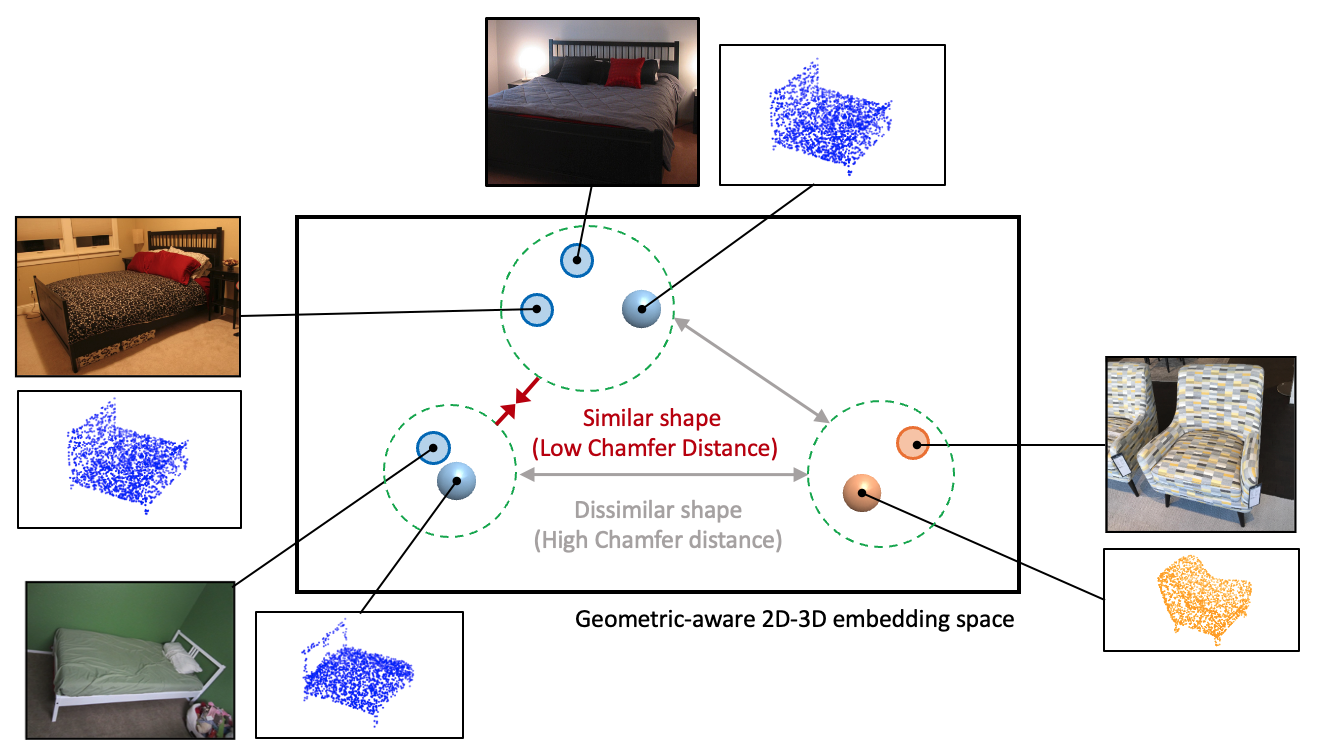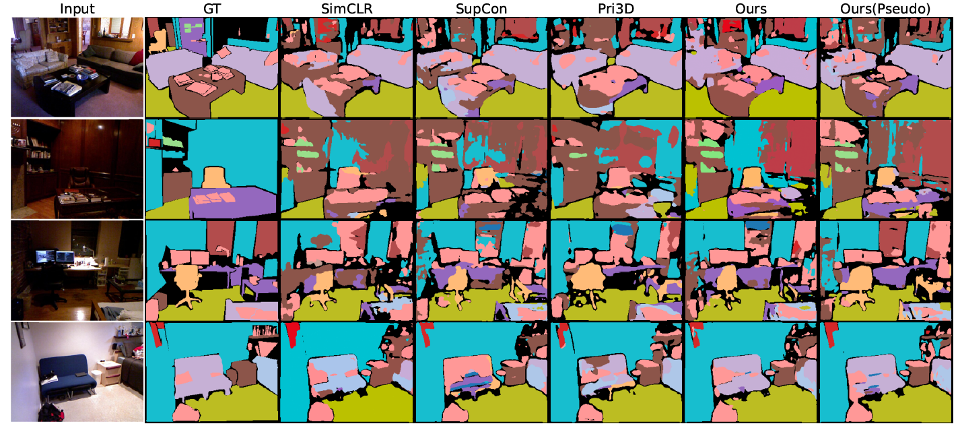
Cross-modal training using a 2D-3D paired dataset, e.g., multi-view images/scene scans, presents an effective way to enhance 2D scene understanding by introducing geometric and view-invariance priors into 2D features. However, the need for large-scale scene datasets limits their further im- provements and scalability. This paper explores an alternative learning method by leveraging a lightweight and publicly available type of 3D data, i.e., CAD models. We construct a 3D space with geometric-aware alignment where the similarity in this space reflects the geometric similarity of CAD models based on the Chamfer distance. The acquired geometric-aware properties are then induced into 2D features, which boost performance on downstream tasks more effectively than existing RGB-CAD approaches. Our technique is not limited to paired RGB-CAD datasets; we propose an extension for learning such representations on pseudo pairs generated by existing CAD-based reconstruction methods. By training solely on pseudo pairs, we show substantial improvement over SOTA 2D pre-trained models using either ResNet-50 or ViT-B backbone. We also achieve comparable results to SOTA methods trained on scene scans on four 2D understanding tasks in NYUv2, SUNRGB-D, indoor ADE20k, and indoor/outdoor COCO, despite using real or pseudo-generated lightweight CAD models.

We leverage CAD models to train a joint 2D-3D space such that images of objects with similar shapes, based on the Chamfer distance, are attracted to each other, while images with different shapes are separated. This results in a continuous geometric-aware space where the distance between two points reflects their geometric similarity, which could be utilized for downstream 2D object understanding tasks.

The semantic segmentation results are fine-tuned and conducted on NYUv2 dataset.
